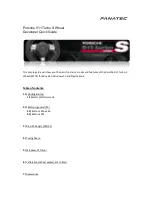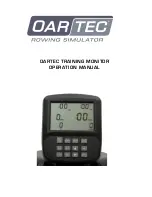
3
CLASSES OF VEHICULAR GATES:
RESIDENTIAL VEHICULAR GATE OPERATOR
– CLASS I- A vehicular gate operator (or system)
intended for use in a home of one to four single family dwelling, or a garage or parking area associated
therewith.
COMMERCIAL/GENERAL ACCESS VEHICULAR GATE OPERATOR
– CLASS II – A vehicular gate
operator (or system) intended for use in a commercial location or building such as a multi-family
housing unit (five or more single family units), hotel, garages, retail store, or other building servicing the
general public.
INDUSTRIAL/LIMITED ACCESS VEHICULAR GATE OOPERATOR
– CLASS III – A vehicular gate
operator (or system) intended for use in an industrial location or building such as a factory or loading
dock area or other locations not intended to service the general public.
RESTRICTED ACCESS VEHICULAR GATE OPERATOR
– CLASS IV – A vehicular gate operator (or
system) intended for use in a guarded industrial location or building such as an airport security area or
other restricted access locations not servicing the general public, in which unauthorized access is
prevented via supervision by security personnel.
The Model 301 barrier gate operator in intended for use in Class II, III, and IV installations.
UL325 ENTRAPMENT PROTECTION REQUIREMENTS
This chart illustrates the entrapment protection requirements for each of the four
UL325 classes.
Exception: An operator for a vehicular barrier (arm) that is not intended to move
toward a rigid object closer than 16 inches (407 mm), is not required to be provided
with means to protect against entrapment.
Usage Class
Barrier (Arm) Gate
Primary Type
Secondary Type
Vehicular I and
II
Vehicular III
Vehicular IV
A or C
A, B1, B2, or C
A, B1, B2, C, or D
A, B1, B2, C, or D
A, B1, B2, C, D or E
A, B1, B2, C, D, or E
Note
– The same type of device shall not be utilized for both the primary and the secondary entrapment
protection means.
Use of a single device to cover both the opening and closing directions is in accordance with the
requirement; however, a single device is not required to cover both directions. A combination of one
Type B1 for one direction and one Type B2 for the other direction is the equivalent of one device for the
purpose of complying with the requirements of either the primary or secondary entrapment protection
means.
Entrapment protection types:
Type A
– Inherent entrapment protection system.
Type B1
– Provision for connection of, or supplied with, a non-contact sensor (photoelectric sensor or
the equivalent).
Type B2
– Provision for connection of, or supplied with, a contact sensor (edge device or the
equivalent).
Type C
– Inherent adjustable clutch or pressure relief device.
Type D
– Provision for connection of, or supplied with, an actuating device requiring continuous
pressure to maintain opening or closing motion of the gate.
Type E
– An audio alarm.






































